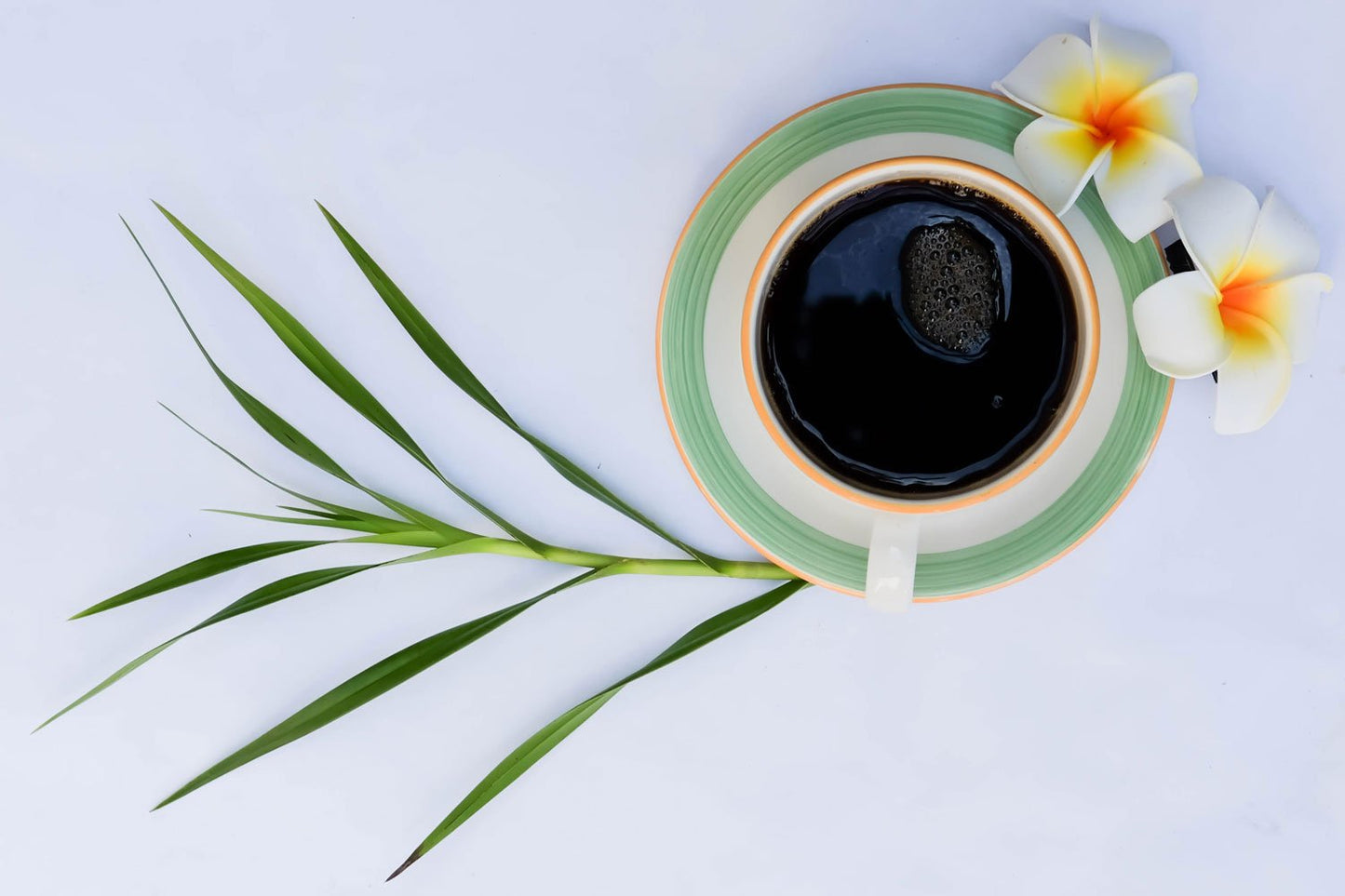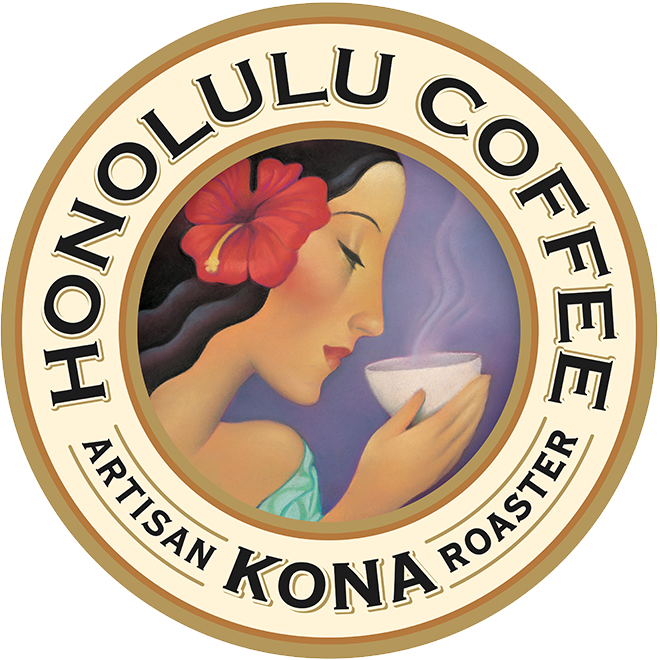
Some of the most commonly asked questions we get in our shops here in Hawaii are, “What is your secret?” or “Why does your coffee taste so much better here than when I make it at home.”
These types of questions are normally followed up with an exasperated, “What am I doing wrong?!”
Well, we hear you and not to worry! If you are asking yourself these questions, you have already identified that you are a passionate coffee lover. Now, you are about to embark on the exciting journey of learning more about home brew methods.
COFFEE IS ONLY AS GOOD AS THE ENJOYMENT YOU GET FROM IT.
Once you experience the difference of how thoughtful brewing affects the quality of the coffee in your cup and the joy it can bring to your morning coffee routine, you will never look back.
Below you will find two different recipes showcasing two different brew methods:
The first is the steeping brew method, using the French Press. This brew method allows for the coffee grounds to remain in a vessel with hot water for a specified length of time, at the end of which the coffee is separated from the brew by a woven wire or mesh filter.
We compared this method to the Drip Filtration, or Pour Over, method, where hot water is sprayed or poured over ground coffee in a paper or, at times, a mesh filter. The hot water extracts the coffee grounds and drains through a filter which separates the ground coffee from the coffee beverage. We show this method in the Kalita Wave 185 recipe. There is also a video below to check out that takes you through the steps of these two brew methods.
Before you break out your favorite at home brewer, let’s review some key points when brewing coffee.
Coffee Key Points
Fresh Grinds
Coffee suffers from oxidation like any other food. The more that occurs, the duller the resulting flavor. Furthermore, ground coffee has more surface area to oxidize, so the longer coffee is in its ground form, the more the flavor dulls. Grinding your coffee fresh (ideally with a burr grinder) gets you the most vibrant flavors (generally speaking). In addition to having fresh ground coffee, another important factor in brewing coffee at home, is the quality of your grinder. It’s important that your grinder is able to make an even size grind of the coffee. This will help the water flow through the coffee at an even rate, making sure there is a balanced extraction.
Good Quality Hot water
Water is one of the most important ingredients for coffee and it is incredible how much the quality of water we use affects the flavor of our coffee. It makes up between 98-99% of drip coffee and 88-92% of espresso. Water for brewed coffee should be clean & filtered. The SCA recommends having your coffee slurry reach 195-205°F in order to extract the very tastiest compounds and acids from your coffee. Recent studies and experiments have shown that heat loss occurs very quickly from kettle to coffee, so starting with water that’s near boiling is the best practice. Some newer findings also show that the tastiest acids in the coffee come out early in the brewing process, but only if the temperature is hot enough.
Coffee to Water Ratio
Coffee is an extremely strong flavoring agent and must be diluted by water. Properly brewed coffee is 1-2% “coffee” and 98-99% water. Following the recipes below should ensure you have a proper coffee to water ratio. If you experiment in the future by making tweaks just keep in mind that, Coffee concentration less than 1% can be considered too weak, while more than 2% is too strong. It’s a fine line when finding that balance in extracting coffee. A general rule of thumb is that you should shoot for 1 part coffee to somewhere between 14 and 20 parts water. You can play with this ratio to find the best recipe for you.
Slow Pour
In order for even extraction to occur, all coffee must be equally and thoroughly saturated. By slowly pouring the water in a circular motion over the bed of coffee grinds, you will ensure that the coffee is totally saturated. Swirling the water in and out from the center to the other edge of your brew vessel will ensure even saturation.
Flat bed
Having a flat bed of coffee grinds at the end of the brew means that all of the water was in contact with the bed for the same amount of time. This is what you want to see! To put it to the extreme, imagine if the coffee was at a 45 degree angle instead of flat. The water would have left the top of the bed earlier and extracted more from the lower part. The last little “swirl” helped ensure this.
Brew Time
Brew time helps maximize the sweetness you get from a coffee. Different coffees brew differently, however, so it’s up to some trial and error to get to this point. A lighter roasted coffee will take longer while a full-bodied, classic dark roast will take shorter.
YOU BREW YOU
Brewing can be a very personal experience. Many people have their own theories, whims they follow, and personal stamps that they put on their brews. One of the early stages of brewing is trying to find a recipe from a trusted resource and stick to it to a “t” (“this brew MUST finish at exactly 2:45!”) while you build your confidence and experience. But slowly it becomes just as much of an art as it is a science. Just like any art, the final product is subject to the interpretation of the viewer.

FRENCH PRESS
The French Press is a simple and classic way to brew coffee. Done correctly, it can appeal to both beginners of home brewing and seasoned professionals alike. Words like “rich”, “sweet”, and even “scrumptious” may escape your lips after those first few sips.
Even better, a really great French Press can be made without having a pantry full of coffee equipment. Below, we’ll lay out a relatively simple method for making a great cup of coffee in the French Press, one that is extra-clean, sweet, and consistent. We are essentially replicating our cupping process and applying it to the French Press. It requires very little finesse and is extremely forgiving; in fact, the hardest thing to attain here may be patience. But we think it’s worth the wait, and you’ll end up with a delicious cup free of the “sludginess” that can plague other recipes. Let’s get started!
WHAT YOU’LL NEED:
- A French Press (just about any French Press will work with this method)
- Something to heat water in. Ex: Pyrex Glass / Tea Kettle
- 40 grams of coffee. If grinding fresh, aim for slightly coarser than drip. If buying pre-ground, use French press grind.
- Two spoons
- A scale if possible
Time: 10-14 minutes
Yield: 2 cups
Further notes:
You can increase the amount of coffee yield without changing anything else about the recipe. Just multiply the grams of coffee you use by 15 for the amount of water to put in (examples: 50 grams of coffee, 750 milliliters of water. 60 grams of coffee, 900 milliliters of water). Adjust to taste from there (stronger, less water. “Weaker”, more water).
THE PROCESS:
- Take your ground coffee and put into the French Press
- Measure 600ml of fresh, filtered water (or about 20oz) and bring to a boil
- Pour just enough boiling water in to cover / saturate grounds
- Pick up the French Press and swirl around to evenly distribute the water.
- Pour the rest of the water in as fast as possible, then cover (no plunge!)
- Wait 4 minutes
- At 4:00, remove cover and "break the crust" with your spoon. This just means you will gently push your spoon around the “crust” of the coffee so that all the coffee grounds start sinking to the bottom. Being gentle is key!
- After about a minute, using two spoons, carefully scoop / remove any leftover foam / grounds from the top.
- Wait patiently. As you wait, coffee particles are continuing to fall to the bottom of the cup. The result will be a cleaner cup. We recommend at least 5 minutes.
- Put cap back on and only push plunger to the top of the grounds. The goal here is to not “disrupt” the coffee
- Pour slowly and carefully into your cup. We want to leave the coffee grounds at the bottom.
Extra Note:
You will probably not be able to get all of the liquid out of the French Press. Tilting the Press too far will cause the sludgy bits to come with it, and the filter will only catch so much. If you find yourself missing or needing some of the extra coffee, we recommend upping your dose of coffee a tad. This way, you get what you want, and the coffee stays clean!
KALITA WAVE
The Kalita Wave is another common at home brew method. This has become a beloved brew method because of its sturdy and well-engineered design. There are multiple styles of this brewer, the method will be the same regardless if you have a metal or ceramic brewer. The design of this brewer helps with even extraction and it can rest on top of your favorite coffee mug, perfect to brew one cup at a time.
WHAT YOU’LL NEED:
- Kalita Wave 185 Brewer
- Kalita Wave 185 filter
- Grinder
- 24 grams of Coffee
- 400g Water
- Scale
- Timer
- Your Favorite Mug or a decanter
THE PROCESS:
- First prepare paper filter and rinse thoroughly while also preheating the brew method and decanter.
- Grind 24g coffee on a medium-fine coarseness
- Dump out water used to preheat vessel
- Place Kalita and decanter on a scale and tare
- Add in 24g of ground coffee
- Level out the grinds for an even distribution by shaking lightly. This ensures that we can evenly saturate all coffee grounds
- Bloom by adding 48-72g water (about 2-3x the amount of coffee)
- Allow coffee to bloom for 45 seconds
- Continue to pour water in a spiral motion until 400 grams is reached
- Finish pouring by 1:40 – 1:50
- Allow water to fully drain through
- Brew should finish between 2:30 and 3:00 (if it finishes before 2:30, your grind was probably too coarse. If it went beyond 3:30, your grind was probably too fine).
- Remove the Kalita, decant (if necessary), swirl, and serve
- Clean – remove filter, wash Kalita




